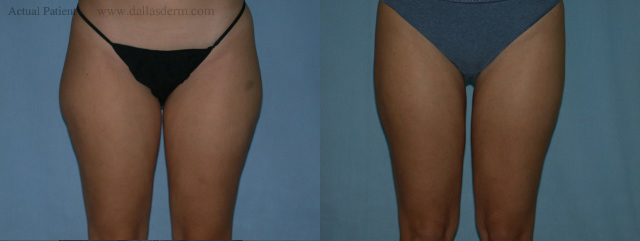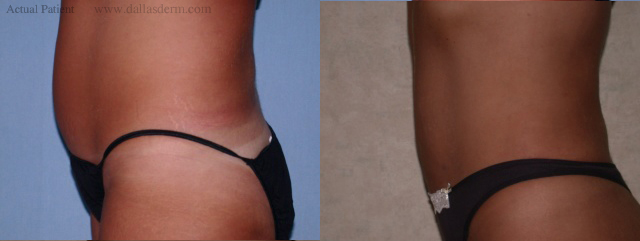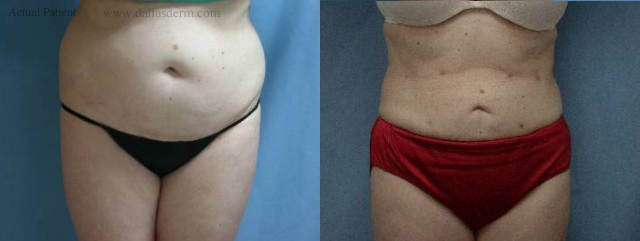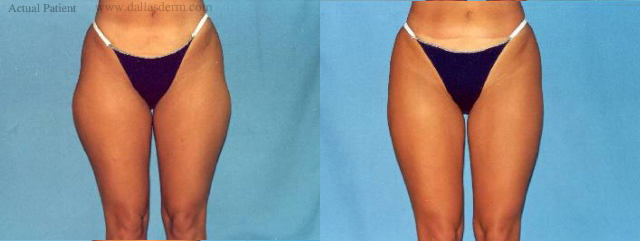Overview Of Liposuction Procedure
Not many of us have the body we want. We diet and exercise and yet still have those annoying areas that we wish we could “fix.” Thighs, buttocks, hips and stomach are some of the areas that many of us would like to improve.
Well, now we can.
Tumescent liposuction, also called liposculpture, is an advanced technique of permanent removal of fat that is located in specific pockets on the body. The word “tumescent” means to swell, and this is derived from the technique of infiltrating a large volume of fluid into the area being treated. This fluid contains a dilute anesthetic and completely numbs the area, allowing the procedure to be done while the patient is awake. This compares with the old style liposuction, which carried a much greater risk and was responsible for some side effects not seen with the newer tumescent technique.
They call it liposculpture for a reason; the doctors of Dallas-based Dermatology Consultants will be sculpting new areas on your body, allowing you to fit into clothes you haven’t worn in years, rebuilding your confidence, and improving your outlook.
Liposuction Surgery FAQ (Frequently Asked Questions)
What areas of the body are amenable to tumescent liposuction?
Any area of fat accumulation that does not respond to diet and exercise can be treated with tumescent liposuction. Most common areas, especially in women, are the upper and lower abdomen, the upper outer thighs, hips, waist, arms and neck. In men, the areas especially include the abdomen and the “love handles” on the waist, as well as the neck.
How safe is the procedure?
When the true tumescent liposuction as described in the original dermatology literature is used, there are no reported cases of serious side effects. The only reported major problems have been when surgeons have elected to deviate from the normal routine performed in the office.
After I am numb, what is the procedure actually like?
Several very tiny incisions are made in the area to be treated and a small diameter instrument called a cannula is used to suction the fat by making tiny tracks through the fat layer. One can actually view the fat cells being removed through the clear tube, if desired.
Is it painful?
There is slight stinging as the tumescent fluid is being administered to the area to be treated, but it is quite tolerable. If one is overly sensitive to this, a mild sedative or pain medication can be given, but it is often not necessary. After the procedure, one remains sore in the treated site, much like a bruise would feel.
How long does the procedure last?
We usually are quite slow and careful in administrating the anesthetic fluid, often taking one hour. The actual procedure can then take from 1-3 hours, depending on the individual and the volume of fat that needs to be removed.
What is the aftercare like?
The worst part of the procedure is the tumescent fluid that tends to leak from the tiny incisions in the first 24-36 hours following the procedure. This is a bother but is temporary. A compression garment, much like a girdle, is worn to compress the abdomen and allow for more fluid removal. This is worn the entire time for the first several days and usually for comfort only for the first week or so.
How much work will I miss?
Most patients have the procedure done on a Thursday and are able to return to work the following Monday or Tuesday.
When can I start exercising again?
One can start walking within the first 24 hours and in a few days stretching and light exercise may be done, with heavy exercise resumed in one week.
When can I see results?
Many patients will notice that their clothes fit looser within a day or two of the procedure but more improvement is seen in 4 weeks and final results may not be apparent for 6 months or more, because of the contraction of tissues afterwards.
Will I regain the fat in the areas treated?
Because of the permanent removal of the fat cells, one would not be able to regain as much fat as they would have had the procedure not been performed. Weight gain can certainly occur but will usually move to other areas.
What do I have to do prior to the procedure?
A consultation will be performed in which we will go over the details of the procedure. There are a certain number of blood tests that are done prior to the procedure to make sure that there are no underlying medical problems. Sometimes vitamin K is given prior to the procedure to prevent excessive bleeding, which is very rare. If one smokes, we strongly urge that they try to curtail this because it delays healing.
What does the procedure cost?
This depends entirely on the areas treated, but the costs are much less than the old style of liposuction, which is done in the operating room under general anesthesia. Generally one can count on a fee of $2500.00 for a primary area with additional fees depending on other areas done at the same time. In order to prevent complications, there is a limit on how many areas we wish to do in one setting.
What about ultrasonic liposuction?
This is an interesting technique in which ultrasonic waves are sometimes passed through the liposuction instrument or given externally to the area being treated. At this point, most experienced liposuction surgeons feel that there is not a great advantage in using the ultrasonic techniques, although developments are being made in these areas quite rapidly. Despite the lack of demonstrable differences, the ultrasonic technique is certainly being advertised heavily.
Liposuction Gallery





